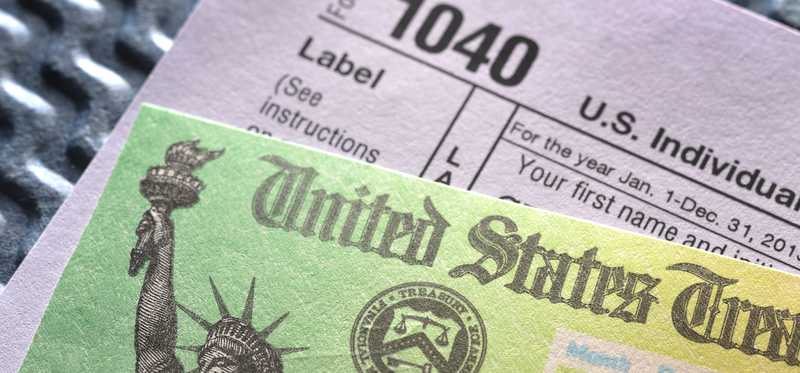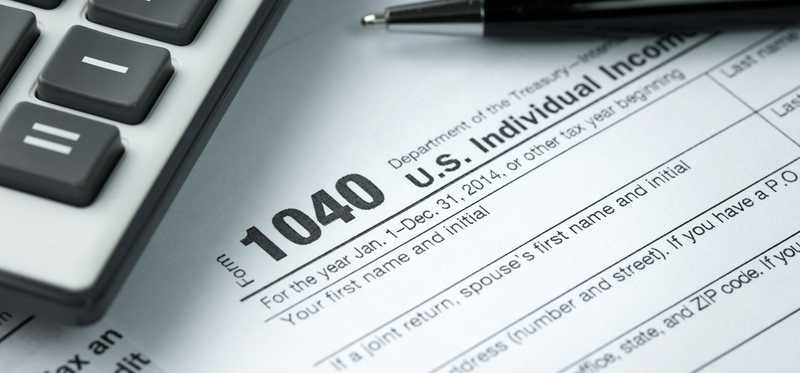18 Ways to Lower Your 2019 Tax Bill

18 Ways to Lower Your 2019 Tax Bill
A lower tax bill is within reach
So you want to pay less tax in 2019. Who doesn't? The good news is, there are ways to reduce the amount of money that you send to the IRS -- legally, without allegations of tax evasion. In fact, there are plenty of steps you can take to cut your federal and state tax bills. And, the sooner you start, the more things you can do to reduce the taxes you'll owe.
To help you reduce your tax bill in 2019, here are 18 steps to consider.
Previous
Next

1. Contribute as much as you can to retirement accounts
Want to set yourself up for the future while slashing your tax bill at the same time? Contribute to tax-advantaged retirement accounts such as a 401(k) and IRA.
Unless you opt for a Roth account, you can take deductions for your contributions in the year you make them. This enables you to deduct a lot of money. You can contribute up to $19,000 to a 401(k) and up to $6,000 to an IRA in 2019. You can also make additional catch-up contributions of $6,000 to a 401(k) and $1,000 to an IRA if you're over 50.
Anyone can contribute to a 401(k). If neither you nor your spouse has a retirement plan at work, anyone can contribute to an IRA as well. If either of you has a plan at work, contributions phase out at higher income levels.
If you can max out both your 401(k) and IRA, you'd be able to reduce your taxable income by $25,000 or $32,000 if you're over 50. If you're in the 24% tax bracket, this would mean saving up to $6,000 or $7,680 if you max out catch-up contributions too. That's a huge amount of tax savings.
Previous
Next

2. Take advantage of tax loss harvesting
If you have losing investments, selling them allows you to harvest your losses to offset taxes on investment gains or to reduce your taxable income by up to $3,000.
This strategy can be especially beneficial if your income is going to be higher than normal and you want to avoid being pushed into a higher tax bracket, or if you're going to be selling investments that you'll need to pay short-term capital gains on.
Previous
Next

3. Get -- or keep -- your health insurance
In 2019, the Obamacare mandate has been repealed on the federal level. This means you'll no longer pay a tax penalty to the federal government if you go without health insurance. But that doesn't mean you're necessarily off the hook. Many states have imposed penalties in 2019, most of which take the form of a tax if you fail to maintain qualifying health insurance coverage.
The last thing you want is to owe a bigger state tax bill because you failed to have health insurance to protect you and your loved ones. So, check your state's rules to find out if a penalty is in effect. Or better yet, just buy health insurance as getting covered can prevent you from suffering a really huge financial disaster if you get sick or hurt.
Previous
Next

4. Invest in an HSA, if you're eligible
Speaking of health insurance, if you have a high deductible health plan, you may be eligible to invest in a health savings account in 2019. If you're able, you should definitely take advantage.
If you have self-only coverage, you should be eligible to invest in an HSA if you have a deducible of at least $1,350. If you have family coverage, you may be eligible if your deductible is at least $2,700. If you're allowed to contribute, you can invest up to $3,500 for individual policies or $7,000 if you have family coverage.
When you put money into an HSA, you invest the funds with pre-tax dollars. This means you could reduce your taxable income by $3,500 or $7,000 if you max out your contributions. You can then take out this money tax-free to cover healthcare costs, so you get a huge tax benefit since both deposits and withdrawals are tax free. And, if you don't use the funds for healthcare, you also have the option to withdraw money after age 65 and be taxed on the distributions as ordinary income without paying any penalties.
HSAs are a great tool to invest for your future, so there's no reason not to put money into them if you're eligible.
Previous
Next

5. Keep track of your medical costs
If you incur substantial medical expenses, you may be able to take a deduction for the funds you spent.
In 2019, you can deduct unreimbursed allowable medical expenses only if they exceed 10% of your income -- up from 7.5% in 2017 and 2018. You'll need to itemize to claim this deduction -- which doesn't make sense for many tax payers due to the large standard deduction.
Still, you should keep the bills you incur throughout the year. If your costs are high enough to hit the threshold for deductibility, you want to be able to take advantage of the tax savings to offset some of your big care expenses.
Previous
Next

6. Save for college for the kids in your life
If you have a kid, saving for college in a 529 is a no-brainer. But, even if you don't have your own child, you can open a 529 plan for other kids in your life, including grandchildren, nieces and nephews, and even friends. You could even open a 529 to save for your own college tuition if you're planning to return to college.
Contributions to 529 accounts aren't tax-deductible on the federal level, although invested funds grow tax free. But, depending where you live, you may be able to deduct 529 contributions from your state taxes. In fact, more than 30 states as well as Washington DC allow either deductions or credits for 529 contributions.
Reducing your state tax bill may be more important than ever thanks to new federal limits on the deductibility of state and local taxes that went into effect in 2018. While you used to be able to deduct all the taxes you paid to your state from your federal taxable income, you're now capped at deducting a maximum of $10,000. This new cap is called the SALT (state and local tax) cap.
Anything you can do to bring your state taxes below this threshold is helpful, since you don't want to pay federal taxes on money you had to pay out to your state.
Previous
Next

7. Put some cash into flexible spending plans
If your employer offers flexible spending accounts, you should likely take advantage of them.
You can make contributions to an FSA with pre-tax funds to pay qualifying out-of-pocket medical expenses. You could potentially also enroll in a dependent care FSA to pay for services such as child care or care for a disabled relative.
It's important to know the rules for FSA contributions. You'll usually have to enroll in an FSA during open enrollment with your employer, and many plans are structured so if you don't spend your contributions, you lose them. Still, if you know you're going to have out-of-pocket medical costs or dependent care costs to pay, you should strongly consider putting some money into the FSA to reduce your taxable income and make these expenditures effectively cost less.
Previous
Next

8. Bundle your deductible expenditures
Lots of tax deductions -- such as the deduction for medical expenses, charitable contributions, and mortgage interest -- are available to you only if you itemize. And, as mentioned above, the standard deduction is large in 2019. Unless your itemized deductions exceed $12,200 for singles; $24,400 for married filing jointly; $18,350 for head of household; or $12,200 for married filing separately, itemizing won't make sense.
But, there may be a way to preserve these itemized deductions by bundling them. Basically, this would involve making two years worth of deductible payments or contributions in one taxable year. If you donate $10,000 annually to charity, for example, try donating $10,000 for 2019 throughout the year -- and make your full 2020 $10,000 donation in December of 2019. This would mean you now have $20,000 in deductions for one year, so it could suddenly make sense to itemize when it didn't before.
Obviously, this is a simplistic example. But, if you want to try bundling any deductible expenditures, you need to have spare cash to make it possible. Still, if you can do it, you could potentially achieve more tax savings than by claiming the standard deduction.
Previous
Next

9. Deduct every business expense you're entitled to
Business owners have a lot of different deductions they can claim, but many people are reluctant to take advantage of some of them for fear of being audited. In particular, people are afraid to take the home office deduction. If you're legitimately entitled to a deduction, you should never be afraid to claim it. Just make sure you know the IRS rules and can prove you're in compliance.
You can also try to classify as much of your spending as possible as a business expense. Want to take a vacation to Vegas for a few days? Try to time your trip to attend a conference while you're there so you can deduct the costs. Again, just make sure you know the rules -- and that the trip is a legitimate business trip -- to avoid trouble.
Previous
Next

10. Further your education
Did you know that you can take a deduction of up to 20% of the first $10,000 in qualifying educational expenditures you incur each year, even if you aren't actively working towards earning a degree? That's right -- there's a Lifetime Learning Credit you can claim, as long as your income isn't too high. This credit could be worth up to $2,000 maximum and there's no limit to the number of years you can claim it.
That means taking classes could help you to reduce your tax bill while learning valuable new skills that open up career opportunities. So why not learn something new in 2019 while paying a little less to the IRS.
Previous
Next

11. Contribute to charity
Charitable contributions are tax deductible if you itemize, so consider making some generous contributions in 2019.
You can take a deduction both for cash contributions as well as for donating items of value. Just make sure you can document the contributions that you make, and that you don't inflate the value of items you donate. No one's going to believe your bag of old clothes you give to the Salvation Army is actually worth $10,000, even if you had some really nice shoes in there.
Previous
Next

12. Move to a lower tax state
This may seem like a drastic move, but there's a huge difference in state taxes from one locale to another. In fact, there are some states where you could live where you'd pay no taxes at all on your income, while others impose a high tax burden.
The Tax Foundation provides a ranking of state and local tax burdens and, for 2017, the U.S. average state-local tax burden as a share of state income was 9.9%. However, in the state with the highest burden -- New York -- the state/local tax burden was 12.7%. By comparison, Alaska had the lowest burden at 6.5% while six other states had tax burdens below 8%.
If you have flexibility in where you work -- or you're retired -- switching to a state where you pay far less of your income in taxes could help you keep much more in your pocket. This is especially true since, as mentioned above, not all of your state and local taxes may be deductible on your federal return anymore thanks to the SALT cap.
Previous
Next

13. Buy a house
While buying a home is a big decision, it's a choice that could help to reduce your tax bill.
That's because you can deduct mortgage interest as well as property taxes you pay (up to the SALT cap limits). If you purchase a home in 2019, you can deduct all of the interest paid on mortgages up to $750,000. And, interest on home equity loans or lines of credit may also be deductible if you use the funds to acquire or improve your home.
Just remember, to qualify for the mortgage interest deduction, you'll need to itemize on your taxes. If you're claiming the standard deduction, buying a home could still potentially be a good investment -- but it won't have the same effect of reducing your federal tax bill.
Previous
Next

14. Make energy-efficient improvements to your home
Did you know you can actually get a tax break for making your home more energy efficient? That's right, there are a host of residential renewable energy tax credits available to homeowners in 2019 that could save you a fortune.
Residential renewable energy tax credits are available for the installation of solar power to power your home, as well as the installation of solar powered water heaters. You can also claim a credit for wind turbines, renewable-energy fuel cells used to generate power for a home, and geothermal heat pumps. The credit is equal to as much as 30% of the cost of your home improvement project, and there's no maximum limit on how much of a credit you can claim unless you're claiming it for fuel cells. You can even claim this credit on improvements to both primary and second homes.
When my husband and I installed solar panels on our house a few years ago, we got around a $9,000 credit for the panels we paid cash for -- and remember, a credit is a dollar-for-dollar reduction in the taxes you owe.
Previous
Next

15. Appeal your property taxes
Appealing your property taxes is a great way to reduce your local tax bill, especially as the National Taxpayers Union Foundation estimates anywhere from 30% to 60% of taxable properties in the United States have been overassessed.
When you appeal your property taxes, you challenge the value of your home, which is used to determine the amount of taxes you owe. If you can prove, via an appraisal or comparable sales, that your home was appraised too high, you can cut hundreds or even thousands of dollars off your local tax bill.
Usually, this process is pretty simple and just involves filing some paperwork and perhaps attending a hearing. Thanks to the new cap on the SALT deduction, it's definitely worth making the effort to reduce the local taxes you owe.
Previous
Next

16. Have a baby
It's true -- kids come with a whole bunch of tax breaks!
While this is definitely not reason enough to add another child to your family, you should be aware of all of the federal tax benefits you get for your bundle of joy. These include the child tax credit, which tax reform doubled to $2,000 per qualified child under aged 17 ($1,400 of which is refundable).
Having a child could also make you eligible for an earned income tax deduction at a higher income than if you're single, and could entitle you to claim head-of-household filing status instead of single status (provided you meet specific requirements related to supporting your child).
When you have a child during a tax year, even if you give birth on Dec. 31, you're considered to be a parent all year long for tax purposes. So, you have plenty of time to add a new member to your family and claim all of the credits that come with him or her in 2019.
ALSO READ: Why the 2019 Tax Season Could Get Off to a Rocky Start
Previous
Next

17. Get help from a tax professional -- or use the right software tools
Doing your taxes can be complicated, and if you try to do things totally on your own, chances are good you'll miss some credits and deductions you're entitled to.
Software programs aim to help you catch those credits and deductions by asking you simple questions about your life. And, for most people, finding a high quality tax software program to use should be sufficient to make sure you're reducing your taxes as much as possible.
Sometimes, however, there's no substitute for professional help. If you had big life changes in 2019, have started a profitable business, or you've earned a lot of money from different sources, hiring an accountant may be worth the cost to ensure you aren't paying any more than you need to the IRS.
Previous
Next

18. Defer income if you'll make less next year
Finally, if you think you're going to make a lot this year and suspect your income will be smaller next year, try to divert as much income as you can until later. This could mean asking your boss to delay paying a bonus until after Jan. 1, 2020, or holding off on invoicing some of your clients until the new year arrives.
Previous
Next

Reducing your tax bill takes effort -- but it's worth doing
While it's unlikely that you'll be able to take all of these steps to reduce your tax bill, taking as many of them as you can is just smart financial planning. If you can get the government's help in building wealth by buying a home or investing for your future, there's no reason not to take advantage of these opportunities.
The Motley Fool has a disclosure policy.
Previous
Next
Invest Smarter with The Motley Fool
Join Over Half a Million Premium Members Receiving…
- New Stock Picks Each Month
- Detailed Analysis of Companies
- Model Portfolios
- Live Streaming During Market Hours
- And Much More
READ MORE
HOW THE MOTLEY FOOL CAN HELP YOU
-
Premium Investing Guidance
Market beating stocks from our award-winning service
-
The Daily Upside Newsletter
Investment news and high-quality insights delivered straight to your inbox
-
Get Started Investing
You can do it. Successful investing in just a few steps
-
Win at Retirement
Secrets and strategies for the post-work life you want.
-
Find a Broker
Find the right brokerage account for you.
-
Listen to our Podcasts
Hear our experts take on stocks, the market, and how to invest.
Premium Investing Services
Invest better with The Motley Fool. Get stock recommendations, portfolio guidance, and more from The Motley Fool's premium services.